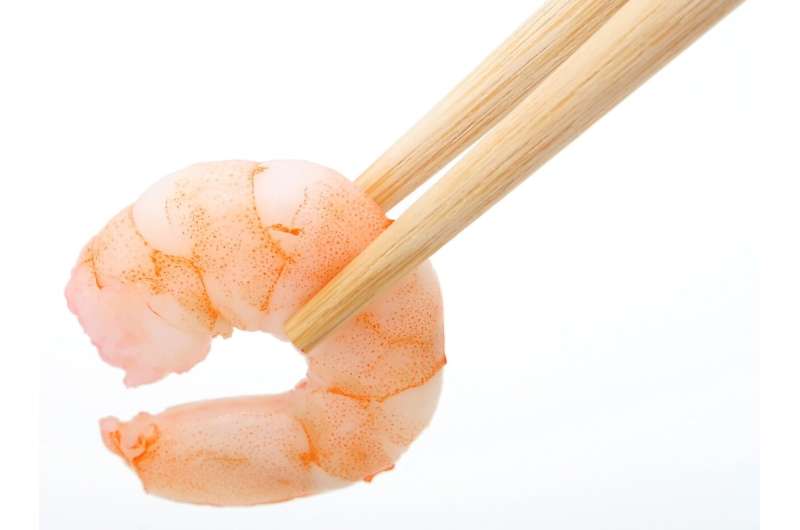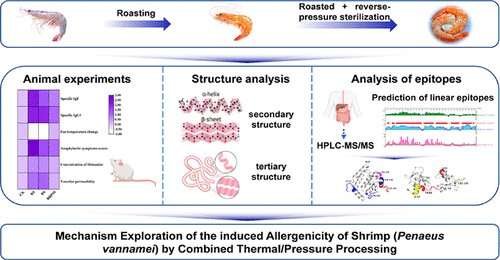This article has been reviewed according to Science X's editorial process and policies. Editors have highlighted the following attributes while ensuring the content's credibility:
fact-checked
peer-reviewed publication
trusted source
proofread
Using pressure and steam to create shrimp with fewer allergens

With the start of summer, many people will be firing up their grills and roasting everything from hot dogs to steaks. Shrimp won't be on the menu for millions of Americans with seafood allergies, though a method reported in the Journal of Agricultural and Food Chemistry could change that. The researchers say that reverse-pressure sterilization can produce a less-allergenic shrimp product, that when tested in mice sensitive to the crustaceans, did not cause severe reactions.
Some of the most common foods that people are allergic to are dairy products, wheat, peanuts and seafood. The immune system mistakes some proteins from these foods for an intruder and launches a response against them. In minor cases, this can provide some discomfort or swelling, and in severe cases, it can be life-threatening. But the proteins to which the immune system reacts can be altered or degraded when heated, which might prevent antibodies from recognizing them, and thus make the food safer for people with allergies to consume.
Studies on other shellfish, such as oysters, have suggested that allergenicity can actually increase after roasting, while others show that it decreases. So, Na Sun and colleagues wanted to understand exactly how allergens in shrimp change during post-processing. They also wanted to see if they could create a more hypoallergenic product.
The team separated samples of shrimp (Penaeus vannamei) into three groups. One group was raw and the second was roasted. The third group was roasted and then treated with reverse-pressure sterilization, in which the crustaceans were exposed to a high pressure and steam. All three groups were mashed into pastes, and each was given to a separate group of mice that had a shrimp allergy.

Both the raw and roasted shrimp caused similar reactions, including increased levels of histamine and damage to the spleens and lungs, suggesting that roasting alone did not change the protein's properties much. The third group had milder reactions and less organ damage.
When the allergen proteins in the shrimp samples were examined more closely, the team found that roasting caused these proteins to change shape, but antibodies could still bind. However, reverse-pressure sterilization caused the proteins to cluster together, hiding the binding sites. This hindered antibodies from latching on, and thus prevented a severe allergic reaction.
The researchers say that this method successfully and efficiently reduced the allergenicity of shrimp, as well as elucidated the unique protein changes that caused it.
More information: Kexin Liu et al, Reduced Allergenicity of Shrimp (Penaeus vannamei) by Altering the Protein Fold, Digestion Susceptibility, and Allergen Epitopes, Journal of Agricultural and Food Chemistry (2023). DOI: 10.1021/acs.jafc.3c01557
Journal information: Journal of Agricultural and Food Chemistry
Provided by American Chemical Society





















